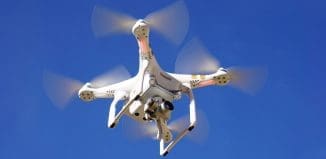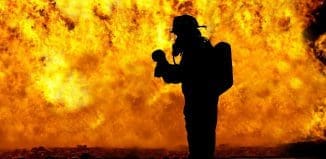New technology will help fire fighter to see in a burning structure
This post is also available in:  עברית (Hebrew)
עברית (Hebrew)
לעברית לחץ כאן
.
 A team of Italian researchers has developed a new imaging technique that uses infrared (IR) digital holography to peer through chaotic conflagrations and capture potentially lifesaving and otherwise hidden details. The team describes its breakthrough results and their applications in a paper published today in the Optical Society’s (OSA) open-access journal Optics Express.
A team of Italian researchers has developed a new imaging technique that uses infrared (IR) digital holography to peer through chaotic conflagrations and capture potentially lifesaving and otherwise hidden details. The team describes its breakthrough results and their applications in a paper published today in the Optical Society’s (OSA) open-access journal Optics Express.
The new technology will hopefully answer one of the main Firefighters challenges seeing through thick veils of smoke and walls of flame to find people in need of rescue
Currently firefighters can see through smoke using current IR camera technology. Such instruments, however, are blinded by the intense infrared radiation emitted by flames, which overwhelm the sensitive detectors and limit their use in the field. By employing a specialized lens-free technique, the researchers have created a system that is able to cope with the flood of radiation from an environment filled with flames as well as smoke.
“IR cameras cannot ‘see’ objects or humans behind flames because of the need for a zoom lens that concentrates the rays on the sensor to form the image,” says Pietro Ferraro of the Consiglio Nazionale delle Ricerche (CNR) Istituto Nazionale di Ottica in Italy. By eliminating the need for the zoom lens, the new technique avoids this drawback.
“It became clear to us that we had in our hands a technology that could be exploited by emergency responders and firefighters at a fire scene to see through smoke without being blinded by flames, a limitation of existing technology,” Ferraro says. “Perhaps most importantly, we demonstrated for the first time that a holographic recording of a live person can be achieved even while the body is moving.”
The release notes that in the researchers’ new imaging system, a beam of infrared laser light is widely dispersed throughout a room. Unlike visible light, which cannot penetrate thick smoke and flames, the IR rays pass through largely unhindered. The IR light does, however, reflect off of any objects or people in the room, and the information carried by this reflected light is recorded by a holographic imager. It is then decoded to reveal the objects beyond the smoke and flames. The result is a live, 3-D movie of the room and its contents.
The next step in moving this technology to the field is to develop a portable tripod-based system that houses both the laser source and the IR camera. The systems may also be suitable for fixed installation inside buildings or tunnels. In addition, the team is exploring other applications, most notably in the biomedical field for non-destructive testing of large aerospace composite structures.



























